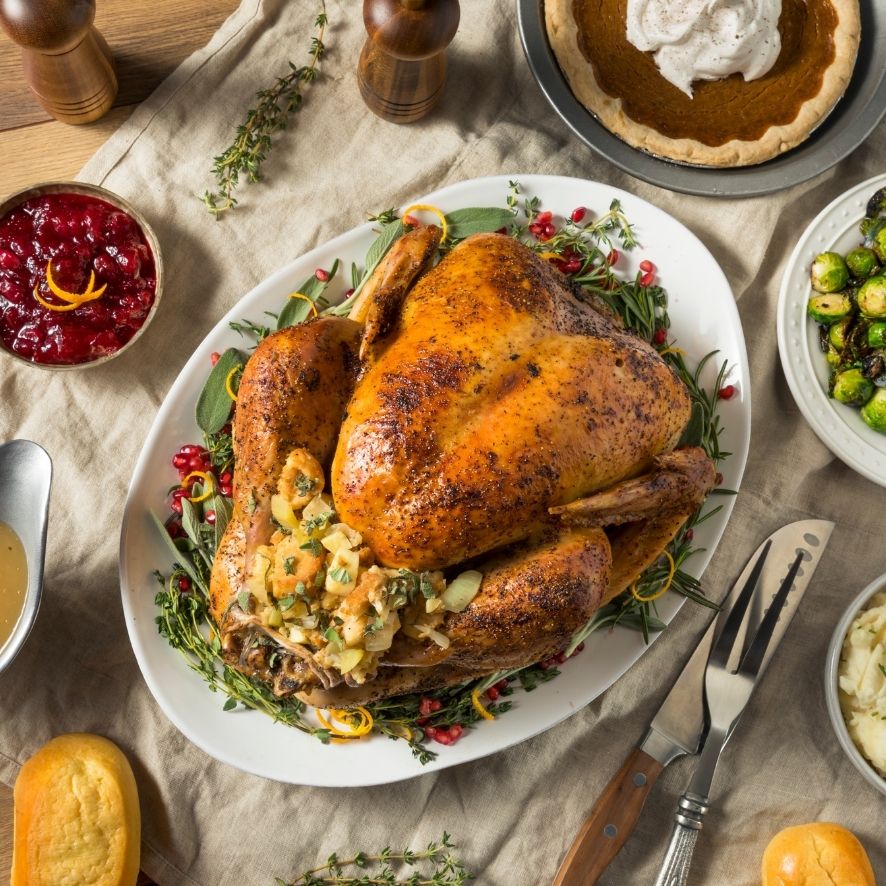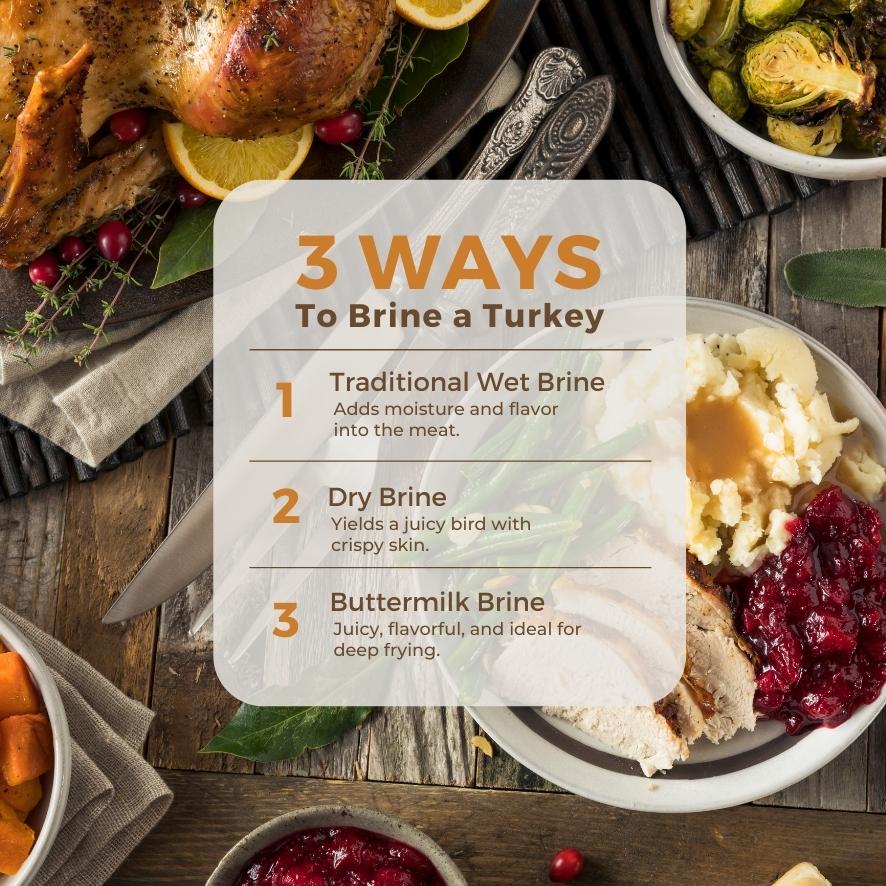Your Thanksgiving Turkey Game Plan: Prep

From thawing to brining and roasting to carving, here's your Thanksgiving turkey cheat sheet to help you plan a fret-free holiday feast.
Tools of the trade:
- Large clean 5-gallon bucket*
- Large-rimmed baking sheet
- Space in your fridge
- Salt and/or sugar
- Aromatics
- Bakers Twine
*If you're wet brining
Thaw Your Turkey
Before you begin any other prepping, start thawing your turkey. You can do this two ways.
1. In the Refrigerator
The easiest way, but also the most time consuming, is to let the turkey sit in the refrigerator for a couple of days. The general rule of thumb is about five hours of thaw time per pound.
2. In Water
If you’re short on time, place it in a large, leak-proof plastic bag and immerse the turkey completely in a cold-water bath and refresh the water every thirty minutes. For this method, it takes about an hour for every pound of turkey. (For example, if you have a ten-pound turkey, it will take ten hours.)
Note: If the turkey is partially thawed, be sure to keep an eye on it and check for thawing as you go. After thawing, check turkey cavity and remove anything inside.
Prep Your Turkey

There are three different ways to brine your turkey: traditional, dry, and buttermilk. All these methods will keep the meat from drying out during the cooking process. It’s recommended to start brining your turkey a minimum of 24 hours before cooking it.
What you’ll need: space large enough in the fridge to hold either a turkey on a rimmed baking sheet or a bucket with the turkey and brine inside.
Traditional Wet Brine
Adds moisture and flavor to the meat.
Mix 1/4 cup of salt and two tablespoons of sugar in a quart of water until dissolved. You'll need to adjust the proportions depending on the size of your turkey. One quart of brine is needed for every pound of turkey. Brine for approximately eight hours (for a turkey 8+ pounds). When it's time to cook, remove the turkey from the brine and pat dry.
Dry Brine
Yields a juicy bird with crispy skin.
Mix 1/2 cup of salt with two tablespoons of baking powder. Pat thawed turkey dry, and sprinkle salt mixture over the turkey until it is coated (but not thickly crusted). Note: You might not need all the salt depending on the size of the turkey. Place in the refrigerator on a rimmed baking sheet, uncovered, for 12 to 24 hours. Do not rinse before roasting, just omit any salt used in later seasoning.
Buttermilk Brine
Juicy, flavorful, and ideal for deep frying.
Mix 1-1/2 cups of salt in five quarts of water until the salt has dissolved. Add three quarts of buttermilk and mix. Place turkey in brine and refrigerate for approximately eight hours (for a turkey 8+ pounds). When it's time to cook, remove the turkey from the brine, and pat dry.
Season Your Turkey
Before roasting, use a combination of aromatics to help flavor the turkey during the cooking process. Some variations to try:
- One lemon cut in half, 10-12 sprigs of fresh thyme, three to four sprigs of rosemary
- One orange cut in half, six to eight sprigs of rosemary
- Five to six cloves of garlic, half of an onion, seven to eight sprigs of sage
- One apple quartered, one fennel bulb quartered
Another great way to season the turkey (if you're not deep-frying it), is to place pieces of herbed butter under the skin. This will baste the bird as it roasts, while also adding flavor to any drippings that will later be used for gravy.
Once the bird is seasoned, stuffed, and ready to roast (or deep-fried) trussing the turkey allows it to cook more evenly. Trussing involves tying the wings and legs tight to the turkey's body with bakers twine. Watch this how-to video from Alton Brown.
The turkey is ready to roast! Grab a roasting pan with a V-shaped rack, and put the turkey on the rack.

